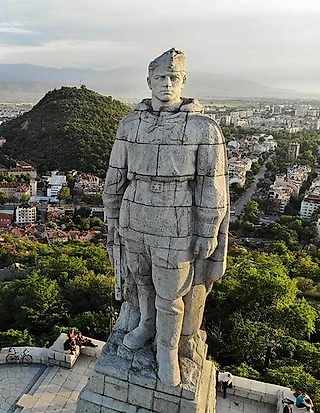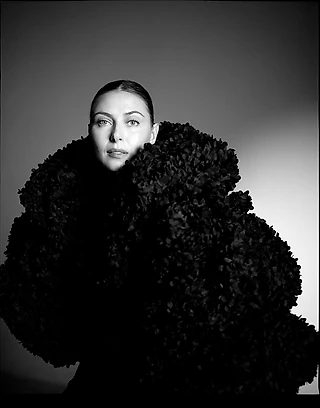Can anti-doping bodies maintain their scientific integrity? The answer is troubling
Roger Pielke Jr
The allegations of systematic, state-sponsored doping by Russian athletes have rocked the sports world on the eve of the 2016 Rio Olympics. At the core of the allegations are alleged efforts by Russian government and sports officials to subvert the science of drug testing in order to enable doped athletes to appear clean and then win medals.
Recent weeks have seen a focus on what to do about the eligibility of Russian athletes for the upcoming Rio Olympic Games. Few think that the International Olympic Committee and other organizations have handled this crisis particularly well. But the problems facing governing bodies in sport go much, much deeper. Beyond the headlines, one important challenge facing anti-doping organizations is scientific integrity in sports, a subject that until now has received little attention.
In my forthcoming book, The Edge: The War Against Cheating and Corruption in the Cutthroat World of Elite Sports, I document numerous instances of the corruption of science in sport. Science is at the centre of issues involving huge economic and political stakes, making scientific integrity something that matters. The episode I describe here, adapted from The Edge, involves Erik Tysse, a Norwegian race walker, who was not treated well by the sports organizations that were supposed to be protecting his rights.
In July 2010, Norwegian race walker Erik Tysse learned that he had failed an antidoping test following a race in Sesto San Giovanni, Italy, two months earlier, in which he had finished second. The substance for which he failed the test was related to erythropoietin, better known as EPO. At a press conference, a tearful Tysse vehemently protested his innocence.
Despite his protests, Tysse was found guilty by the Norwegian Athletics Association in a decision that was later upheld by the Court of Arbitration for Sport (Cas). Tysse’s Cas appeal was rejected based on scientific analyses performed by a laboratory in Rome accredited by the World Anti-Doping Agency (Wada). Tysse served a two-year suspension, returning before the 2012 London Olympics, where he placed fourteenth in the 20-kilometer race walk.
From afar, Tysse’s case looks like countless others in sport. Athlete is caught doping. Athlete denies doping. Antidoping agencies use science to counter the denial. Athlete is suspended. If athlete chooses to challenge the suspension, suspension is upheld. Athlete returns to sport, forever tarnished. Life goes on.
But a closer look at Tysse’s case, which has been discussed in depth in Norway but not much beyond, reveals some troubling details that call into question the capabilities and integrity of Wada itself, the very agency that is supposed to uphold the rights of athletes.
In 2013, well after Tysse’s case had been decided and he had served his doping punishment, a team of four Norwegian academics published a paper with some incredible claims in the journal Lab Times. Jon Nissen-Meyer of the University of Oslo and his colleagues alleged that Wada scientists had, among other scientific misdeeds, manipulated the evidence that purportedly indicated that Tysse had failed the doping test. Several of these scientists had testified on Tysse’s behalf before the Cas, and they decided to publish their concerns about the case after Tysse had served his suspension. Specifically, the Norwegian scientists alleged that officials from the Wada lab in Rome had dressed up evidence in a way as to make Tysse’s guilt appear more compelling and his innocence appear less likely. If this allegation is true, it would be troubling, because Wada’s labs are supposed to be fair arbiters of science. The organization’s motto, after all, is “play true.”
The Norwegian scientists argued that “to support their interpretation,” the Wada scientists “presented to the Cas an altered version of [the] results.” Specifically, Tysse’s drug test data, presented as a series of darkened bands in a laboratory image, showed alignment between Tysse’s results and the bands that would indicate doping. However, “in order to achieve this alignment, the bands in the athlete’s [part of the image] were moved upwards and expanded 40%,” the result of which was to more strongly suggest that Tysse’s drug test indicated doping. The scientists did not hold back in their judgment of the appropriateness of such methods: “The use of such a cut-and-paste method is a deviant and unreliable way of treating and presenting data.”
They alleged that the Cas arbitrators who upheld Tysse’s suspension had been bamboozled by the complexities of the underlying science: “Only those not acquainted with the relevant techniques, such as arbitrators in the Cas, are likely to be deceived” by such methods. Instead, the researchers argued, the arbiters relied on their trust of Wada. The Norwegian scientists found other problems with the Wada analysis and concluded, “we do not know whether the athlete has taken any illegal drugs . . . [but given the analysis presented] the athlete should therefore be considered innocent.” Dozens of independent scientists, including a Nobel Prize winner, agreed and signed a letter critical of Wada and Cas.
Nissen-Meyer and his colleagues identified other manipulations. One key image of Tysse’s urine test results was displayed upside-down and reversed. Nissen-Meyer explained to me that, as “a consequence of the inversion, it is more difficult to discover that the laboratory decreased the staining intensity of the negative control lanes and simultaneously increased the staining intensity of the lane that contained Tysse’s sample.” In plain English, this means that the images were altered to make Tysse’s sample (originally shaded fairly lightly, and then processed to look darker) look more like what would be expected in the “negative control lane,” (which was processed to go from darker to lighter) had Tysse been guilty of doping. The processed images were used as evidence of doping, but presented in an upside-down mirror image in the drug test report, making these alterations harder to detect.
The same image was further altered into a 3D image for presentation in the Cas arbitration involving Tysse. This additional alteration raised even more questions. Werner Franke, Helmholtz Professor for Cell Biology at the German Cancer Research Center, and Hans Heid, a senior scientist at the center, wrote a letter to the Cas alleging that this 3D image of the same data provided as a supplement to Cas testimony “can only be explained by manipulation, i.e. falsification of a document used in a ‘court case.’ ” Such manipulation of evidence (more alleged instances related to Tysse’s case are discussed in The Edge) raises lots of concerns.
Although the questions about the various images used in the case were raised long after the case had been decided, the case is notable because Wada was asked to serve as an authoritative arbitrator of science in a situation where the scientific competencies of one of its labs were at issue. A conflict of interests exists because Wada is expected to serve as a neutral arbiter of science and prosecution witness at the same time – roles that are not particularly compatible. Sport law expert Natalie St Cyr Clarke explains that for athletes who come before Cas, this conflict of interest among Wada-affiliated experts means that “the athlete is at an inherent disadvantage in mounting a scientific defence against anti-doping charges.”
But the story gets stranger. The editors of Lab Times revealed in November 2015 that Peter van Eenoo, the president of a group representing the Wada-accredited laboratories, sent a letter on behalf of Wada laboratories to companies that had advertised with Lab Times. The letter, sent in October 2105, complained about the Nissen-Meyer article published in Lab Times: “Your company is one of the companies… which has supplied us with instruments for many years. As you are an important sponsor of ‘Lab Times,’ we want to inform you that we consider that the [Nissen-Meyer] article and behavior of ‘Lab Times’ reflects badly on your company.” One of the companies that received the letter shared it with the editors at Lab Times, who wasted no time in publishing an excerpt as part of an editorial commentary about van Eenoo and his colleagues’ tactics.
The Lab Times editors described the message that they thought the letter was carrying:
The malicious intent and undercover nature of this letter is a clear attack on press freedom. In addition, it may inflict serious damage on the business of our publishers. Van Eenoo stopped short of open threats, of course. But his heavily implied message is clear: The 35 accredited Wada labs will no longer do business with companies that advertise in Lab Times.
I asked van Eenoo about the letter and his motivation for writing it. He explained that Wada’s ethical code prohibited him and his colleagues from responding to the Lab Times articles in the scientific literature and that any such response would have called attention to the claims: “As a lab, we are bound by Wada’s ethical code and cannot respond in such cases. In these cases all the other party wants is as much publicity as possible. By responding to this, they would have gotten exactly what they want.”
Setting aside the issue of doping, in terms of scientific integrity, the behavior of the Wada lab directors is troubling on several levels. First, if true, the allegations related to the manipulation of images used as evidence by Wada’s Rome laboratory constitute research misconduct. Unfortunately, such allegations are not isolated. Since Wada was created, more than a dozen of its thirty-five accredited laboratories have been suspended or lost their accreditation due to producing “sub-optimal work.” The Rome lab’s activities in the Tysse case, if they happened, are clearly sub-optimal. The Wada lab in Rio, where the Olympics are about to begin, has just been reinstated after being suspended.
Perhaps more troubling is that, when faced with evidence assembled by a team of independent academics in a popular German journal, the Wada lab directors responded with what appears to be a thinly veiled threat to the companies that advertise in that journal. An independent investigation of the scientists’ allegations would have been a far better response.
Did Tysse dope? The only person who really knows the answer to that question is Tysse (and perhaps his close companions). I correspond with a number of Norwegians who have followed the case, and there are passionate and smart people on both sides of this question. Whether he did or did not dope, Tysse served his suspension and is back racing.
What does appear clear is that Wada, the body responsible for enforcing antidoping rules and regulations, engaged in unambiguously questionable practices regarding the presentation of scientific evidence. The aggressive behavior of Wada toward scientists raising questions about Wada’s practices raises questions about the ability of the organization to implement a robust and fair scientific approach to antidoping. Cas arbitrators may trust Wada, but based on how Wada treated evidence and criticism in the Tysse case, is it not clear that anyone else should.
>










